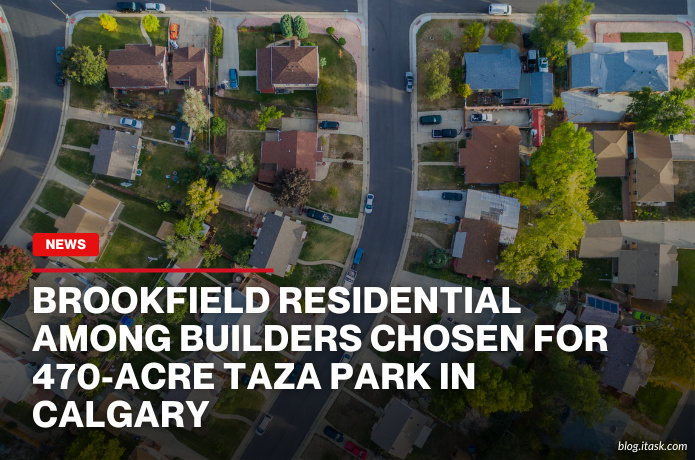Brookfield Residential Among Builders Chosen For 470-Acre Taza Park In Calgary
Brookfield Residential Among Builders Chosen For 470-Acre Taza Park In Calgary

Taza Development Corporation has announced the selection of three homebuilders—Brookfield Residential, Crystal Creek Homes, and Homes by Avi—as the initial residential developers for the expansive 470-acre Taza Park project in Calgary. This significant step marks a major milestone in the development of one of North America's largest Indigenous-led real estate initiatives. citeturn0search0
Taza Park is part of a broader 1,200-acre master-planned community situated on Tsuut’ina Nation land, just west of Calgary's city limits. The development is designed to accommodate approximately 12,000 residents through the construction of over 6,500 residential units. In addition to housing, the plan includes more than one million square feet of retail and commercial space, featuring a 150,000-square-foot main street offering shopping, dining, and entertainment options. citeturn0search1
Brookfield Residential will introduce 'Rhythm' at Taza Park, offering two- and three-bedroom townhomes equipped with walk-out and rooftop patios, as well as spacious garages accommodating up to three cars. Crystal Creek Homes plans to develop 'Juniper Ridge,' a series of villas that provide options for walkout basements, lofts, and secondary suites, catering to multigenerational living. Homes by Avi will present 'Aurora,' consisting of 46 townhomes with two- and three-bedroom layouts, 24 of which will include secondary suites, all under a no-condo-fee structure. citeturn0search0
The development emphasizes sustainability and cultural integration, incorporating over 20 acres of green space, including parks, wetlands, and dedicated dog parks. Its proximity to natural areas like Weaselhead Flats and North Glenmore Park further enhances the community's appeal. citeturn0search0
James Robertson, President of Taza, highlighted the importance of this collaboration, stating that the selected builders bring extensive experience and a commitment to quality, sustainability, and community values that align with the vision for Taza Park. citeturn0search0
Construction of essential infrastructure, including roadways, utilities, and a culturally significant water reservoir, is already underway. This reservoir, designed in collaboration with a Tsuut’ina Nation Elder, features a conical shape inspired by a tipi and reflects the cultural heritage of the Tsuut’ina people. citeturn0search0
